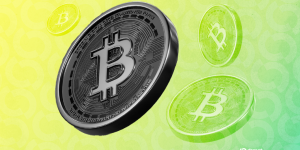Pi Network Navigates Regulatory Scrutiny as Project Pushes Toward Mainstream Adoption

Pi Network, one of the most talked-about blockchain initiatives in recent years, is entering a decisive phase as it works to align its operations with global regulatory expectations. The project, known for its mobile-based mining model and rapidly expanding community, is now addressing compliance concerns that have emerged as it progresses toward opening its mainnet. While the network continues to grow in visibility, regulatory clarity has become critical for its next strategic steps. As Pi Network evolves from an experimental ecosystem into a potential mainstream digital-asset platform, its ability to operate transparently and adhere to compliance frameworks will determine its long-term success.
A Growing Ecosystem Under Regulatory Lens
Pi Network’s community-driven model has led to widespread participation, creating an ecosystem that has quickly drawn attention from both supporters and regulators. With millions of users interacting daily, authorities in several jurisdictions have taken note of its scale and operational structure.
The project’s focus on accessibility—allowing individuals to participate in mining from mobile devices without expensive hardware—has been praised for democratizing entry into digital assets. However, its unconventional approach has also prompted regulators to evaluate whether its activities fit within existing oversight frameworks. As digital-asset regulations tighten globally, Pi Network must demonstrate robust compliance across markets to maintain momentum.
Strengthening Compliance as Mainnet Launch Approaches
The transition from its enclosed network to a fully open mainnet is widely viewed as Pi Network’s most significant milestone. With that transition comes increased scrutiny surrounding user verification, asset conversions and the legitimacy of its token economics.
To address these issues, the project has placed emphasis on identity verification, risk management and transparent communication. Strengthening Know Your Customer procedures and ensuring user activity complies with financial standards are central to the network’s current strategy. These measures are meant to build trust with regulators and reassure users that the platform is evolving responsibly.
Balancing Innovation With Oversight
Pi Network represents a broader trend in digital finance: the challenge of blending innovation with the realities of regulatory compliance. The platform’s mobile-first model, community incentives and expansive reach show the transformative potential of decentralized technologies. Yet, its future hinges on maintaining a delicate balance between operational freedom and adherence to lawful guidelines.
Industry analysts note that regulatory cooperation, rather than avoidance, is likely to determine which blockchain projects thrive in the next decade. For Pi Network, proactive engagement with oversight bodies could become a strategic advantage rather than a burdensome obligation.
Investor Sentiment and Market Implications
Despite regulatory challenges, interest surrounding Pi Network remains strong. Users anticipate that a regulated and transparent mainnet could enhance the token’s credibility and ensure smoother integration with external exchanges and financial institutions.
On the other hand, unresolved compliance issues could delay market access and create uncertainty among participants. For a project operating at such scale, clarity and predictability are essential components for long-term growth. Investors and analysts alike are watching closely to see how the network formalizes its operational standards.
Looking Ahead: The Road to Legitimacy
Pi Network’s next steps will shape its trajectory in the global digital-asset ecosystem. If it successfully addresses regulatory expectations and ensures transparent governance, the network could emerge as a model for user-friendly blockchain platforms seeking mass adoption.
As digital-asset oversight continues to tighten worldwide, Pi Network’s navigation of these regulatory waters will not only influence its own future but could also set precedents for similar community-driven projects. What happens next will determine whether Pi evolves into a fully recognized and regulated digital currency ecosystem—or remains a promising experiment in mobile-based blockchain participation.




